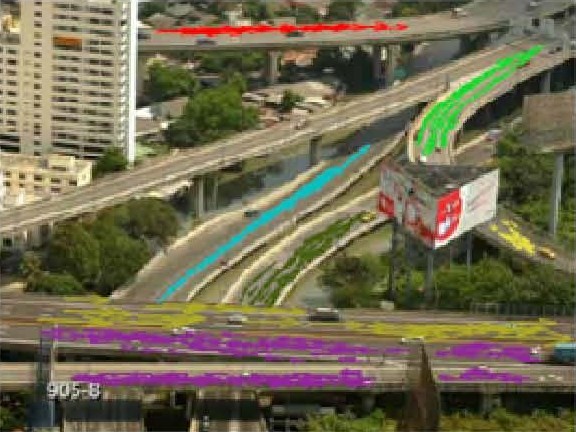Detecting Global Motion Patterns in Complex Videos
Min Hu, Saad Ali, Mubarak Shah
Learning dominant motion patterns or activities from a video is an important surveillance problem, especially in crowded environments like markets, subways etc., where tracking of individual objects is hard if not impossible. In this paper, we propose an algorithm that uses instantaneous motion field of the video instead of long-term motion tracks for learning the motion patterns. The motion field is a collection of independent flow vectors detected in each frame of the video where each flow is vector is associated with a spatial location. A motion pattern is then defined as a group of flow vectors that are part of the same physical process or motion pattern. Algorithmically, this is accomplished by first detecting the representative modes (sinks) of the motion patterns, followed by construction of super tracks, which are the collective representation of the discovered motion patterns. We also use the super tracks for eventbased video matching. The efficacy of the approach is demonstrated on challenging real-world sequences.

Associated publication: